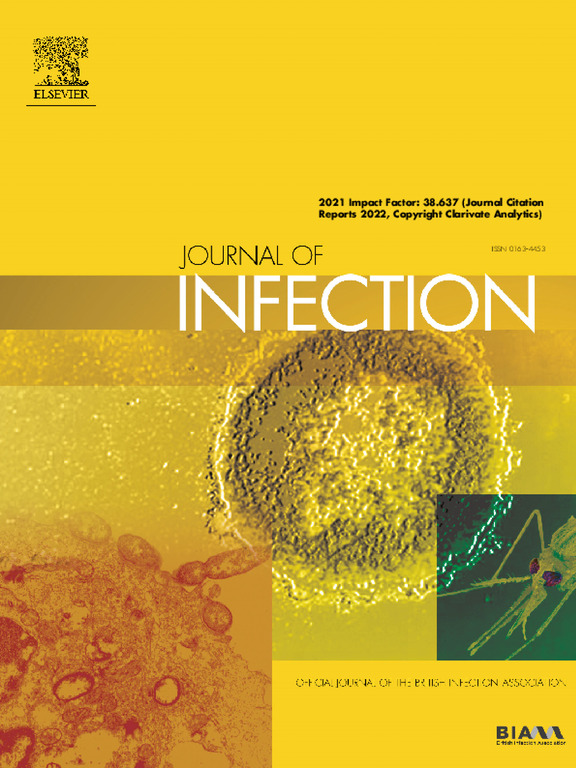欧洲血液恶性肿瘤患者或接受造血细胞移植患者耐药细菌感染的流行病学:欧洲白血病感染会议(ECIL)的系统综述。
IF 11.9
1区 医学
Q1 INFECTIOUS DISEASES
引用次数: 0
摘要
背景:血液学恶性肿瘤(HM)或接受造血细胞移植(HCT)的患者在发热性中性粒细胞减少期间面临血流感染(BSI)的高风险。不断上升的抗菌素耐药性(AMR),特别是在革兰氏阴性(GN)细菌中,挑战了有效的经验性抗生素治疗(EAT)选择。自2011年ECIL-4指南出版以来,ECIL-10系统评价更新了欧洲耐药流行病学,为临床推荐提供信息。方法:我们根据PRISMA指南,使用PubMed、Embase和Web of Science,对2011年6月至2024年9月欧洲HM/HCT患者的细菌流行病学和耐药性进行了系统评价(ID: CRD42025638003)。我们纳入了报告BSI或定植率和耐药模式的研究,包括广谱β -内酰胺酶产生/第三代头孢菌素耐药(ESBL/3GCR)、氟喹诺酮耐药(FQ-R)碳青霉烯耐药(CR)和GN细菌的多重耐药(MDR);耐甲氧西林金黄色葡萄球菌(MRSA)和耐万古霉素肠球菌(VRE)的革兰氏阳性(GP)细菌。两名审稿人独立提取了ECDC/ ear - net 2011年和2022年监测数据,提供了支持分析。我们研究了氟喹诺酮预防(FQ-P)对BSI率和耐药性的影响。结果:分析包括来自12个欧洲国家的40项研究(来自观察性研究的33,387例患者/发热发作,来自一项荟萃分析的21,402例患者)。BSI患病率平均为30%(范围15-59%),GN分布为42%,GP分布为51%。GN BSI的中位耐药率为:FQ-R为55%,ESBL/3GCR为30%,CR和MDR均为13%。铜绿假单胞菌(PsA)和肺炎克雷伯菌(KPn)的CR分别为26%和38%。在GP BSI中,MRSA耐药率为3%,VRE耐药率为1%。定殖研究显示20%的ESBL/3GCR和5%的CR率。我们在ECDC/EAR-Net分析中确认了欧洲东南部的耐药梯度和ESBL/3GCR、CR KPn和MDR PsA的显著时间增长。FQ-P降低了总体和GN BSI发生率,但增加了成人FQ-R和ESBL/3GCR GN感染。在儿童中,FQ-P降低了白血病患者的BSI,但没有降低HCT患者的BSI,耐药数据尚无定论。ECIL-10建议的耐药性报告与ESCMID/IDSA指南一致。结论:AMR在发热性中性粒细胞减少的HM/HCT患者中呈现出不断升级的挑战,具有地域差异和日益增加的耐药趋势。这些发现有力地支持了更新指南、抗菌药物管理计划、快速诊断实施和前瞻性研究以优化有效的经验治疗策略的必要性。本文章由计算机程序翻译,如有差异,请以英文原文为准。
Epidemiology of resistant bacterial infections in patients with hematological malignancies or undergoing hematopoietic cell transplantation in Europe: A systematic review by the European Conference on Infections in Leukemia (ECIL)
Background
Patients with hematological malignancies (HM) or undergoing hematopoietic cell transplantation (HCT) face high risk of bloodstream infections (BSI) during febrile neutropenia. Rising antimicrobial resistance (AMR), especially among Gram-negative (GN) bacteria, challenges effective empirical antibiotic therapy (EAT) selection. This ECIL-10 systematic review updates European resistance epidemiology since the 2011 ECIL-4 guidelines publication to inform clinical recommendations.
Methods
We conducted a systematic review (ID: CRD42025638003) of bacterial epidemiology and resistance in HM/HCT patients across Europe, from June 2011 to September 2024, using PubMed, Embase, and Web of Science according to PRISMA guidelines. We included studies reporting BSI or colonization rates and resistance patterns, including extended-spectrum beta-lactamase-producing/third-generation cephalosporin-resistant (ESBL/3GCR), fluoroquinolone-resistant (FQ-R) carbapenem-resistant (CR), and multidrug-resistant (MDR) for GN bacteria; methicillin-resistant Staphylococcus aureus (MRSA) and vancomycin-resistant enterococci (VRE) for Gram-positive (GP) bacteria. Two reviewers independently extracted data with ECDC/EARS-Net surveillance 2011 and 2022 data providing supporting analysis. We examined fluoroquinolone prophylaxis (FQ-P) impact on BSI rate and resistance.
Results
Analysis included 40 studies (33,387 patients/febrile episodes from observational studies and 21,402 patients from one meta-analysis) across 12 European countries. BSI prevalence averaged 30% (range, 15–59%), with 42% GN and 51% GP distribution. Median resistance rates among GN BSI were: 55% for FQ-R, 30% for ESBL/3GCR, 13% for both CR and MDR. CR reached 26% in P. aeruginosa (PsA) and 38% in K. pneumoniae (KPn). Among GP BSI resistance was 3% for MRSA and 1% for VRE. Colonization studies demonstrated 20% ESBL/3GCR and 5% CR rates. We identified a southeastern European resistance gradient and significant temporal increase in ESBL/3GCR, CR KPn, and MDR PsA, confirmed in ECDC/EAR-Net analysis. FQ-P reduced overall and GN BSI incidence but increased FQ-R and ESBL/3GCR GN infections in adults. In children, FQ-P reduced BSI in leukemia but not in HCT and data on resistance were inconclusive. ECIL-10 proposed resistance reporting aligned with ESCMID/IDSA guidelines.
Conclusions
AMR presents an escalating challenge in febrile neutropenic HM/HCT patients with geographical variability and increasing resistance trends. These findings strongly support the need for updated guidelines, antimicrobial stewardship programs, rapid diagnostics implementation, and prospective studies to optimize effective empirical therapy strategies.
求助全文
通过发布文献求助,成功后即可免费获取论文全文。
去求助
来源期刊

Journal of Infection
医学-传染病学
CiteScore
45.90
自引率
3.20%
发文量
475
审稿时长
16 days
期刊介绍:
The Journal of Infection publishes original papers on all aspects of infection - clinical, microbiological and epidemiological. The Journal seeks to bring together knowledge from all specialties involved in infection research and clinical practice, and present the best work in the ever-changing field of infection.
Each issue brings you Editorials that describe current or controversial topics of interest, high quality Reviews to keep you in touch with the latest developments in specific fields of interest, an Epidemiology section reporting studies in the hospital and the general community, and a lively correspondence section.
 求助内容:
求助内容: 应助结果提醒方式:
应助结果提醒方式:


